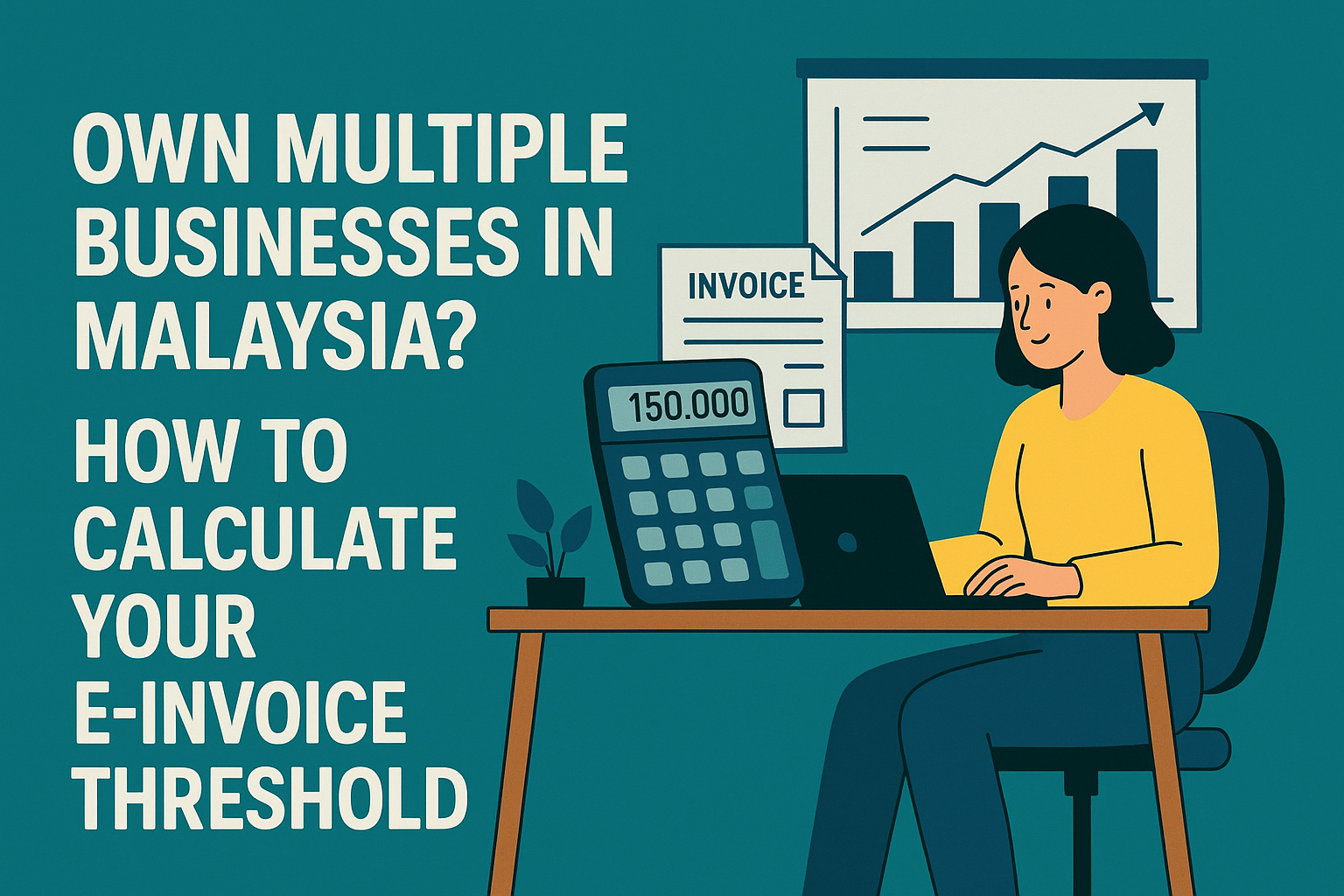As Malaysia continues its nationwide rollout of the mandatory e-invoicing system, one of the most common questions we hear from entrepreneurs is: “I own several businesses. Do I need to combine their revenue to see if I need to comply?”
This is a critical question, as failing to comply can lead to significant penalties. The answer depends entirely on the legal structure of your businesses. To provide clarity, let’s explore three common scenarios, based on an excellent infographic from August Advisory, to understand how the revenue aggregation rule for the e-invoicing threshold works.
The Fundamental Rule: Revenue Aggregation
First, it’s important to know the current mandatory threshold for e-invoicing. Let’s assume for this article the threshold is an annual consolidated turnover exceeding RM500,000 (note: please always refer to the latest official LHDN announcement for the current threshold).
The key principle LHDN uses is revenue aggregation. This means they may combine the revenue of multiple businesses to determine if you have met the threshold. This is to prevent businesses from being split into smaller entities simply to avoid compliance. However, this rule only applies to related entities.
Let’s see how this works in practice.
Three Common Scenarios Explained
Scenario 1: Owning Multiple Sdn. Bhd. Companies
- The Setup: An individual is the majority shareholder of Sdn. Bhd. A (Revenue: RM800,000) and Sdn. Bhd. B (Revenue: RM200,000).
- The Rule: Because these companies are related through common control (the same majority shareholder), their revenues must be aggregated.
- The Calculation: RM800,000 + RM200,000 = RM1,000,000.
- The Result (✓): The aggregated revenue of RM1 million is above the RM500,000 threshold. Therefore, both Sdn. Bhd. A and Sdn. Bhd. B are required to implement e-invoicing.
Scenario 2: Owning Multiple Sole Proprietorships
- The Setup: An individual owns Sole Prop A (Revenue: RM300,000) and Sole Prop B (Revenue: RM400,000).
- The Rule: A sole proprietorship is not a separate legal entity from its owner. Therefore, all businesses registered under the same individual’s name (or the same partnership) will have their revenues aggregated.
- The Calculation: RM300,000 + RM400,000 = RM700,000.
- The Result (✓): The total revenue of RM700,000 is above the threshold. Therefore, both Sole Prop A and Sole Prop B must comply with e-invoicing rules.
Scenario 3: Owning a Mix of Sdn. Bhd. and Sole Proprietorship
- The Setup: An individual owns Sdn. Bhd. A (Revenue: RM800,000) and also personally owns Sole Prop A (Revenue: RM300,000).
- The Rule: This is the most crucial distinction. A Sdn. Bhd. is a separate legal entity from its owner. Its legal identity is distinct from the individual shareholder’s personal business ventures. Therefore, their revenues are not aggregated. Each entity is assessed on its own merit.
- The Result:
- Sdn. Bhd. A (✓): With a revenue of RM800,000, it is above the threshold on its own and is required to implement e-invoicing.
- Sole Prop A (✘): With a revenue of RM300,000, it is below the threshold on its own and is not required to implement e-invoicing (unless it chooses to do so voluntarily).
What This Means for You: An Action Plan
If you own multiple business interests, you should:
- Map Your Business Structure: List all companies where you hold a controlling interest and all sole proprietorships/partnerships registered under your name.
- Calculate Your Aggregated Revenue: Correctly sum the revenues of all related entities as explained in the scenarios above.
- Determine Your Compliance Status: Based on the total, determine which of your business entities are now required to register for and implement e-invoicing.
Navigating E-Invoice Compliance with SMONE
Understanding these aggregation rules and ensuring each of your business entities is compliant can be complex. The team at SMONE is here to help. We can assist you in assessing your group revenue structure and ensure each entity is prepared for the mandatory e-invoicing implementation.
Contact us today for a consultation to ensure your businesses are fully compliant with the latest LHDN regulations.
(Disclaimer: This article is for general informational purposes. It does not constitute legal or tax advice. Please consult with a qualified professional for advice tailored to your specific situation.)


